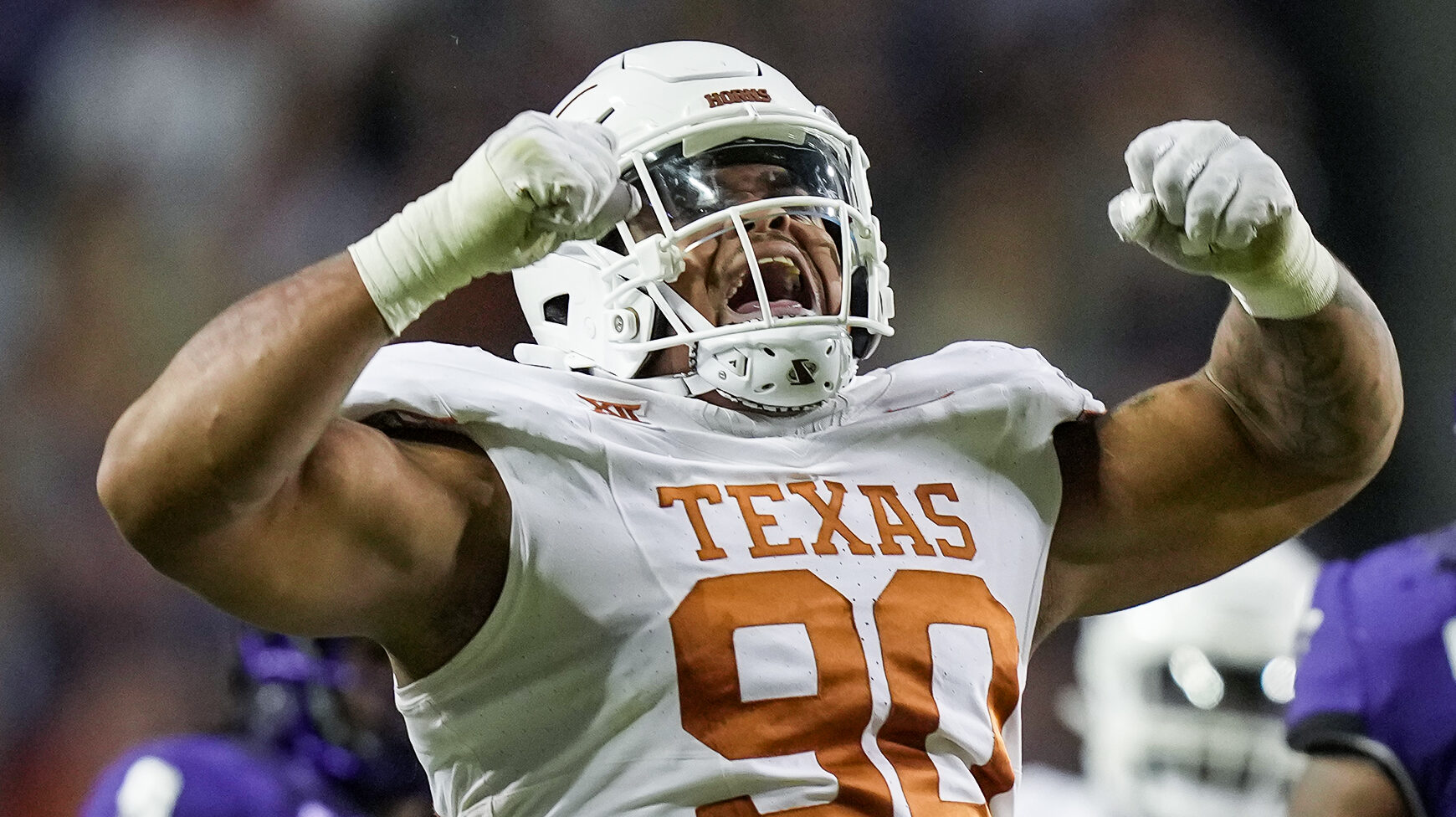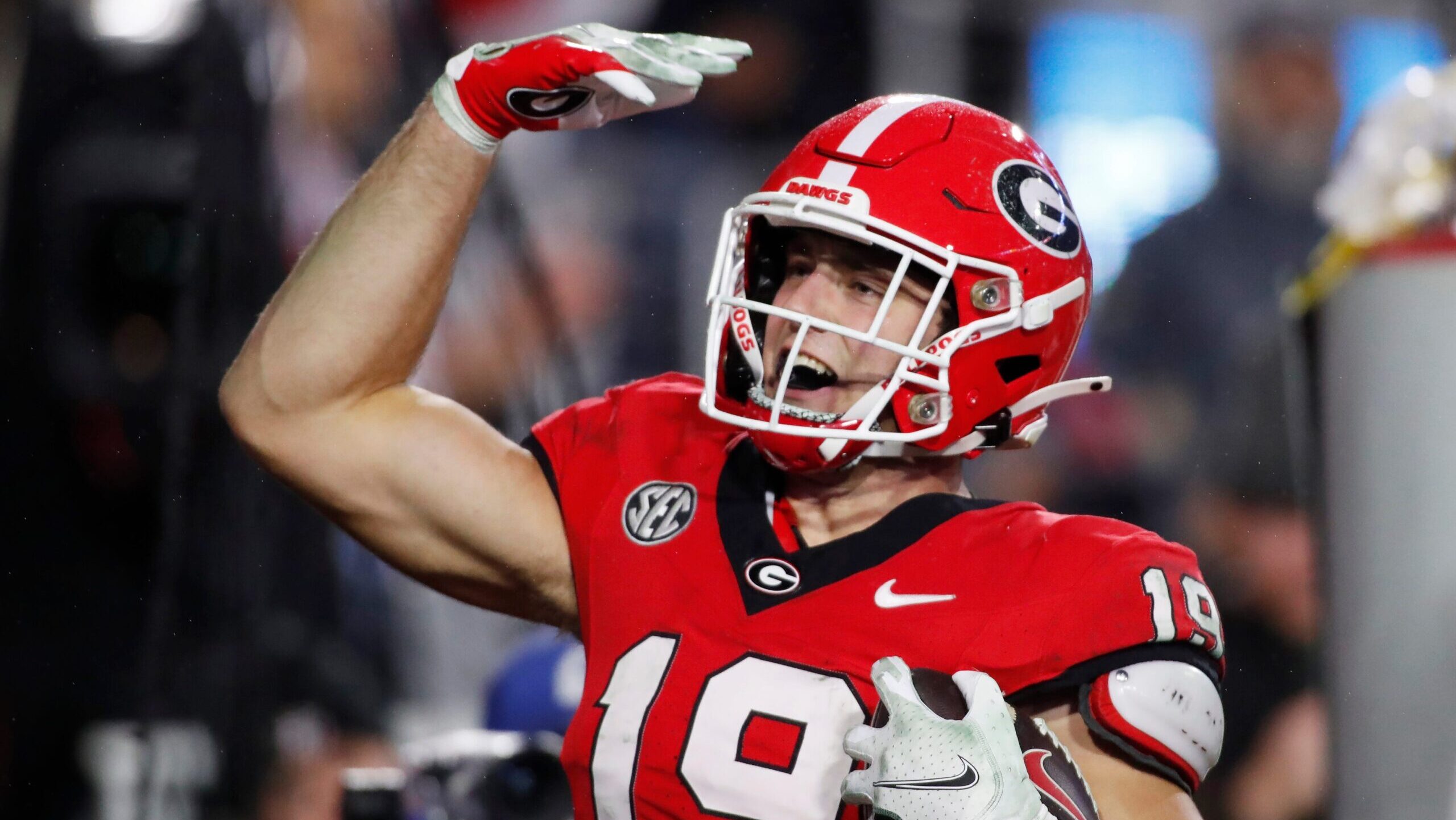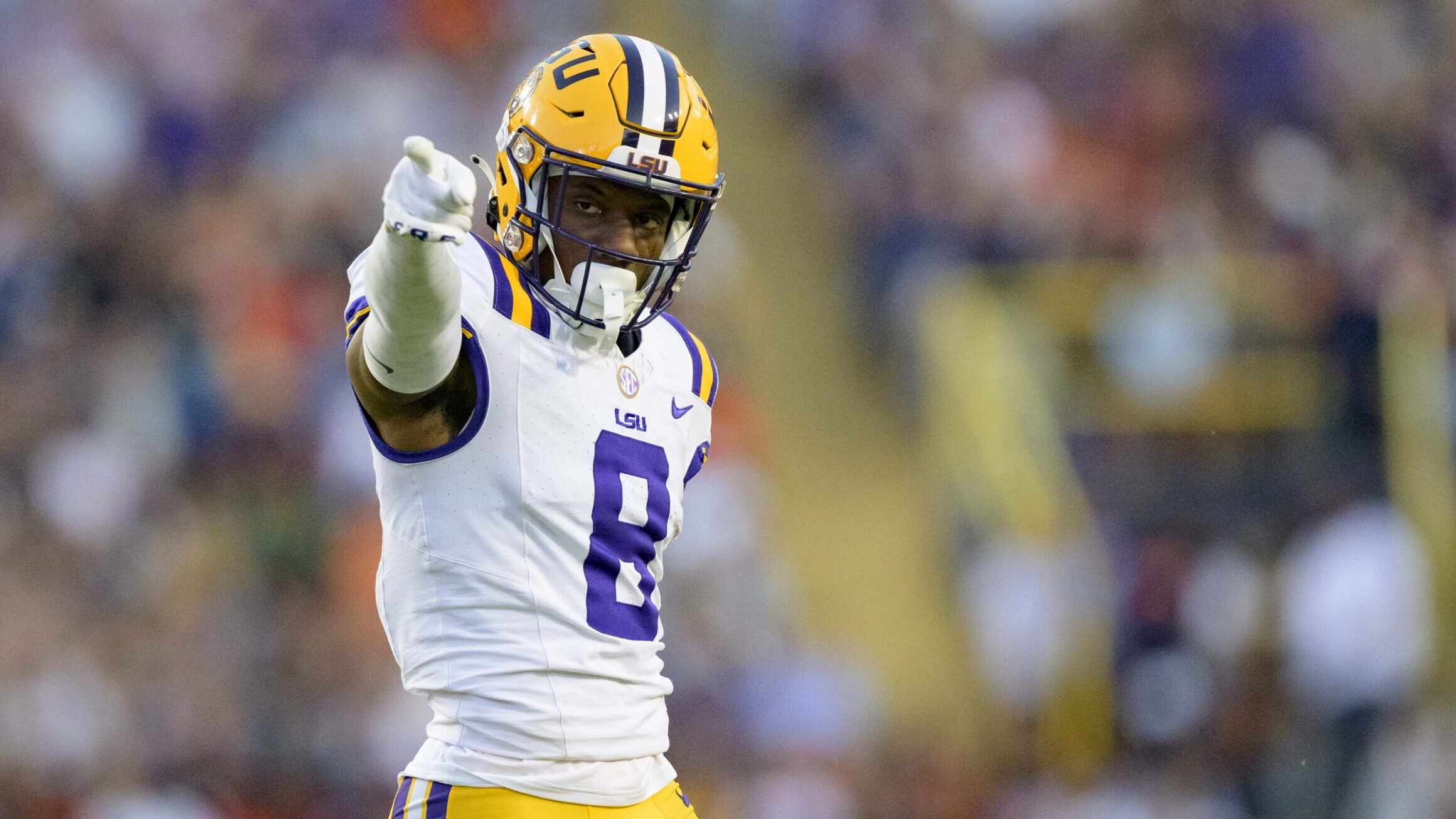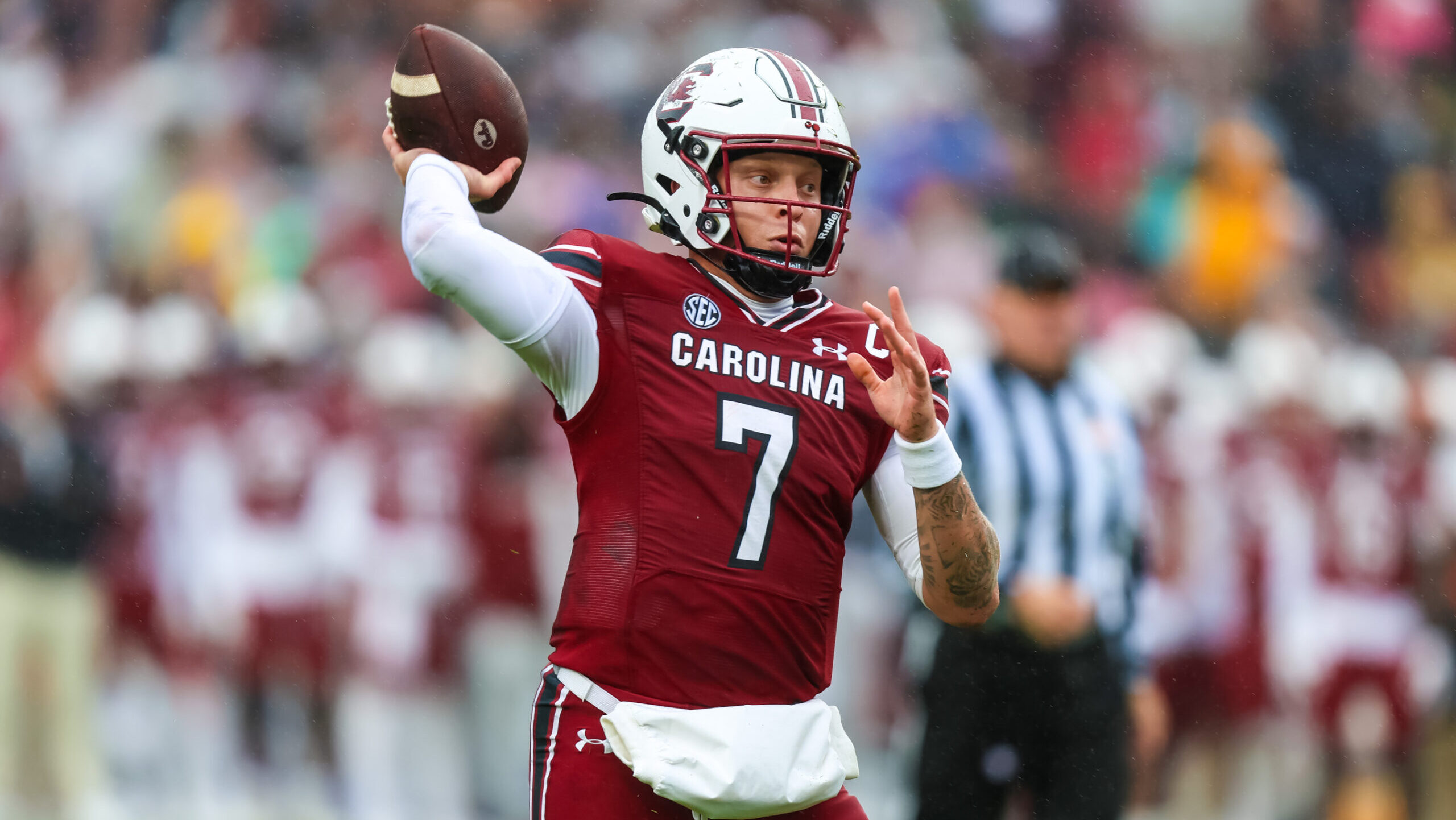Analysis
2/10/23
8 min read
Super Bowl LVII: 5 Things Chiefs Offense Must Do to Move Ball vs. Eagles Defense
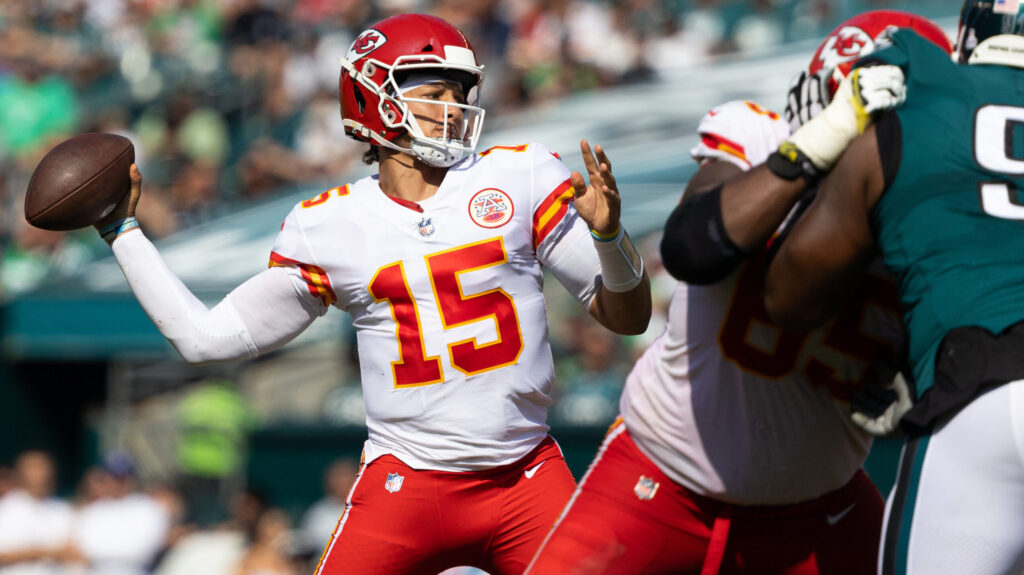
Sunday's Super Bowl LVII matchup will be filled with several unique storylines, perhaps none more intriguing than the strength vs. strength matchup that will take place on the natural grass surface of State Farm Stadium in Glendale, Ariz.
Let's take a look at five things Kansas City's top-ranked scoring offense must do to move the ball against the Philadelphia Eagles, owners of the NFL's fourth-best scoring defense and most dominant defensive line.
Drop Back vs. Pass Rush
This is a unique battle between one of the most pass-heavy teams in the NFL and one of the best pass rushes we've seen in years.
The Chiefs' offense runs through Patrick Mahomes and was No. 4 in attempted passes this season. With the Eagles accruing the third-most sacks in NFL history (70) this season, the protection plan — which is always important — will be of the highest priority this week.
Offenses succeed because they eliminate turnovers, create explosive plays and, most importantly, have a protection plan that allows the quarterback to complete a throwing motion.
The Eagles' defensive line has four game-wreckers, and therefore every drop-back and play-action pass on the Chiefs' pass list must take this into account.
If the AFC Championship Game is any indication of this level of importance, the Chiefs will be more than ready to take on the challenge. Over the course of that game against the Bengals, most of the drop-back passes had a running back, tight end and, at times, even a wide receiver focused on chipping and/or helping the tackles to neutralize the pass rush before releasing in their routes.
For the Chiefs' running backs, this may include chipping a defensive end or releasing in the A or B gaps (center/guard or guard/tackle), with the coaching point of helping the center or guards if they see an Eagles defender getting an edge on a specific lineman.
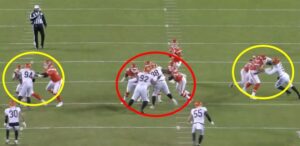
On the left in the image above, we see the tight end helping the right tackle by chipping No. 94 on his way out. Then on the right, we see the running back helping the left tackle by chipping the other defensive end. This protection plan was carried out throughout the AFC Championship Game, and when it wasn't used, Mahomes was subject to getting hit or sacked.
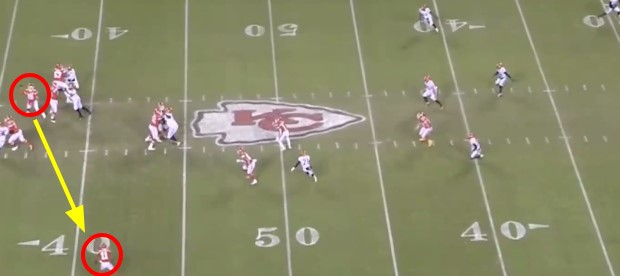
When Mahomes gets another split-second, he is disciplined enough to finish his progressions to tight ends, running backs and even receivers. If Kansas City doesn't chip or help while Philadelphia brings extra rushers, it will have no chance to protect Mahomes.
In the image above, with good protection, Mahomes is able to finish his progression by kicking the ball out, in this case to his flare control Marquez Valdes-Scantling wide open in the flat.
Another way that Andy Reid will counteract the Philadelphia pass rush is by dialing up various types of screens.
A screen is a way to inhibit the pass rush and force defensive linemen to run to the football. The Chiefs are an excellent screening football team, and there is no doubt they'll have multiple ways of getting the ball out to their backs, tight ends and receivers. The screen passes will also take hits off the quarterback.
Kansas City also threw more than a handful of quick-game concepts and multiple bootlegs from the gun over the course of the AFC Championship Game as another means of taking hits off Mahomes.
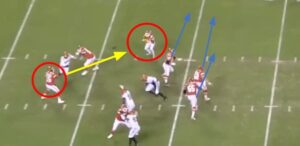
In the image above, the Chiefs kick out a slow screen to running back Isiah Pacheco with three offensive linemen leading the way.
The Eagles' ability to get pressure on Mahomes, and the Chiefs' ability to keep pressure off him, will be deciding factors.
Causing Confusion at LOS
One way the Eagles will likely try to limit the Chiefs' explosive offense is by scheming up Double-A Gap looks and sending five or more rushers at Mahomes.
This will force the Chiefs' offensive line to communicate at the line of scrimmage to ensure they block the most dangerous five, and could also force Mahomes to find his hot receiver and throw the ball quickly.
If Mahomes is forced to throw quickly, that will eliminate his ability to extend and create explosive plays.
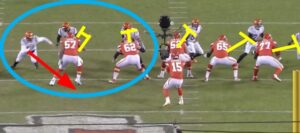
In the image above, with the Chiefs in an empty set, the Bengals line up with six in the box. Mahomes knows that if they bring six, the Bengals will have one more player than Kansas City is able to block. The confusion on this play takes place on the left side of the formation, where the left tackle and left guard are responsible for blocking the most dangerous two of the three.
The left tackle and left guard are confused when the Bengals drop a defender into coverage, and as a result Mahomes is forced to throw hot into the flat, resulting in an incompletion.
Expect Philadelphia defensive coordinator Johnathan Gannon to have an automatic call against the Chiefs' empty sets to see if they made this correction.
Bunch Sets Give Answers to Test
In recent weeks, the Chiefs have used bunch sets to try to assess what coverage the opposing defense is in. This has allowed Mahomes to identify which receivers are likely to be open pre-snap, essentially giving him the answers to the test before the ball is snapped.
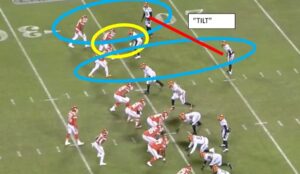
In this bunch look above, you see the tilt in red between the defender over the No. 1 and No. 3 receiver in the bunch. This is telling Mahomes that all three defenders are locked on to their receivers in man-to-man.
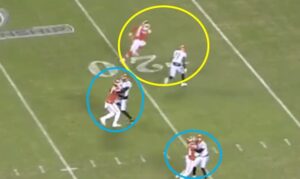
Above, Mahomes has gotten to a play that allows the point player, wide receiver Kadarius Toney (circled in yellow), to win man-to-man on a fade route to the outside.
Although the ball was dropped on this particular play by Toney, the Eagles must be alerted to disguise their coverage looks over a bunch set to prevent Mahomes from getting the Chiefs' offense into the right play.
Establishing the Run
The Eagles' only perceived weakness this season has been their run defense, which has allowed 4.6 yards per carry, ninth-most in the league.
Andy Reid's offensive philosophy of winning through the air will be tested by an opportunistic Philadelphia front four, which will make the running game a focal point early on in the game.
The X-factor is Pacheco, whose charismatic and emotional running style could send a message that Kansas City is prepared to make it a physical game at the line of scrimmage. His running style reminds me of a player I coached in Oakland, Charlie Garner, whose relentless and physical demeanor always made me think of the late boxer Joe Frazier.
If Pacheco is unable to get going early and Kansas City is unable to get the Eagles' defense running sideline to sideline, the result will be a one-dimensional game that makes the Chiefs predictable and plays to the strength of the Eagles' defense.
Keeping Mahomes in Pocket
The Eagles cannot allow Mahomes to move instinctively in the pocket, or even worse, get outside the pocket and use his magic, creative abilities and awkward athletic throws to keep drives alive, allow for explosive plays, and most of all completely demoralize a defense.
Philadelphia must stay disciplined in its pass rush in multiple ways. It must push the pocket inside so that Mahomes can't step up or see, and the edge rushers cannot overrun the depth of his drop so he can step up, slide outside the pocket, and make those incredible throws that have made him the league's MVP.
In the NFC Championship Game, Philadelphia rushed from a "Bear" front early, pushed the middle of the pocket, and contained 49ers quarterback Brock Purdy so he could not escape. This also created one-on-ones against the interior offensive linemen. Coach Gannon undoubtedly will emphasize to his defense that the edge players must stay disciplined and cannot overrun the pocket to allow space for Mahomes to escape.
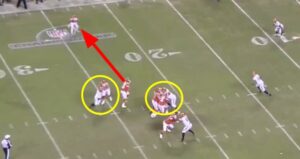
In the image above, Mahomes is able to climb the pocket because the center and guards are firm inside. The Bengals' defensive end has out-rushed Mahomes' drop, creating space for the quarterback to slide and kick the ball out to Pacheco in the flat.
A lot of the excitement of Super Bowl LVII surrounds the strength vs. strength matchup between the NFL's best offense and most complete defense. This matchup will not determine the entire outcome of the game, but if the league's MVP is still standing after 60 minutes, there's a good chance Mahomes wins another Super Bowl MVP and Andy Reid hoists his second Lombardi Trophy.


